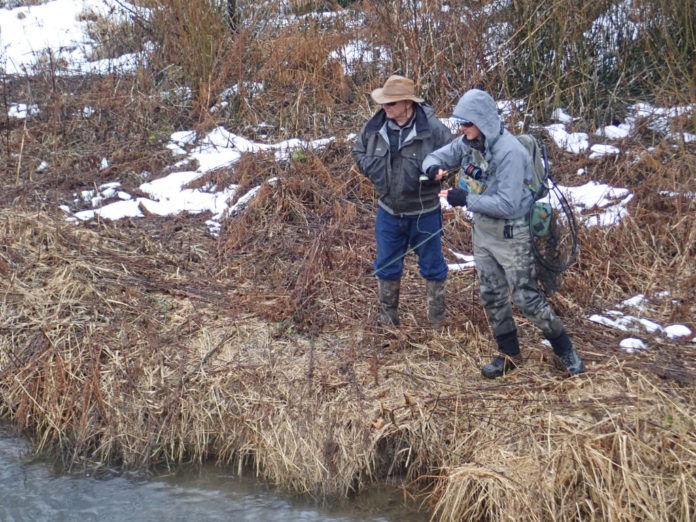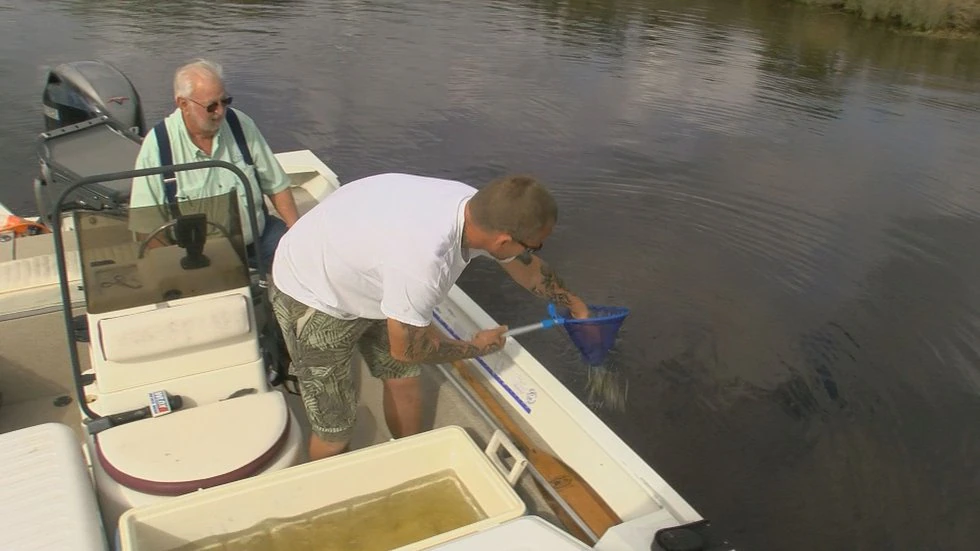Maybe the best place to begin again is where I left off about a year ago when this freelance column was suspended because of the harsh economic realities of the pandemic.
It’s a rainy day on a spring creek in Wisconsin’s Driftless Area. I’m standing on the bank watching Fly Fishing Team USA member Devin Olsen methodically dissect a complex section of water with his unique style of European inspired nymphing. The results are astounding. He catches more trout than I ever imagined that water could hold.
This creates somewhat of a dilemma for me, although I’m happy for Devin. I’ve been dancing around the edges of euro-style nymphing for the past several years and even experimented a bit with the longer euro-nymphing rods, tungsten-bead weighted flies, tippet rings and the strike detection system made from brightly colored leader material that’s tied directly into what amounts to a very long 20-foot plus leader. You attach that leader to a thin diameter, level fly line. Some anglers who aren’t fishing in a competition where the rules require them to use a fly line, replace it with 50 meters of nylon running line.
My dilemma is the standard old guy fly fisher argument that questions whether this is fly fishing at all, or rather just casting a suitably weighted fly on a long leader. Traditionally, fly fishing is defined as casting an essentially weightless fly by loading the fly rod with the weight of the fly line.

My old guy arguments began to break down when I thought back to 40 years ago and considered the flack I got when I was a young fisherman attaching lead split shot to the leader to get my nymph imitations to the stream bottom. It got worse when some of us started using floating strike indicators. The old guys back then said we were fishing with bobbers. That was essentially true, but we were also catching a bunch of trout.
Before I get any farther into this, I should tell you that Devin, Jason Randall, Nick Conklin and I were fishing the Driftless area before we were scheduled to work at the Midwest Fly Fishing Expo near Detroit on the weekend. Jason offered to put us up in his cabin in the heart of Wisconsin’s Driftless area for a few days of fishing before the show. That was last March and it’s where we got the news that the Expo was canceled because of this thing called the COVID-19 virus. We didn’t really know what was coming then and simply rejoiced that we would have a few extra days of fishing because we wouldn’t have to work.
On the first day I pretty much got out of the way and watched Devin and Jason, both of whom are accomplished Euro-nymphers. It was a convincing demonstration of how effective euro-style nymphing could be. By the end of the day, I started thinking, “Why not give euro-nymphing a chance to become one more tool in my fly fishing tool box?”
Devin’s nymphing style is particularly interesting to me because it emphasizes getting lightly weighted small size 18 and size 20 nymphs to drift in a natural fashion. Other euro-nymphing styles rely on larger, more heavily weighted nymphs that sink quickly to the stream bottom and are then allowed to bounce naturally downstream with the current. As the flies progress, you also move the fly rod downstream at about the speed of the current to keep the leader tight. This minimizes slack, keeping you in constant contact with the flies, which makes strike detection close to instantaneous. That results in more positive hookups.

Devin’s technique uses straight 7X fluorocarbon tippet material to which a sighter of Skafars Neon Wax is applied for strike detection. The 7X leader encounters almost no resistance to the current and the smaller, lightly weighted fly drifts in a natural way that is near, but not necessarily, on the bottom. The 7X leader, when fished properly, essentially eliminates the dreaded “leader sag” that results in slack that interferes with strike detection. Devin warns that it takes time to master casting the 7X leader and those of us new to euro-style nymphing might want to try a more traditional setup until we get the hang of things.
“Once you are comfortable with the basics, lighten things up a little. When you’re comfortable with that lighten it up a little more,” Devin advises.
I’m drawn to the way that Devin is continually striving to put as little between the trout and himself as he can. He also constantly modifies his rig to deal with any change in conditions.
His continuing dedication to refining his tackle and technique has resulted in close to a decade of consecutive berths on Fly Fishing Team USA. He’s medaled in fly fishing competitions in Europe and the USA.
I asked him about the difference between his cutting edge ultra light euro-style nymphing technique and the other more common euro styles.
“You get an immaculate drift with the 7X. It’s that simple,” he said.
I’ve worked to attain that immaculate drift both nymphing and dry fly fishing for the past pandemic year. It’s the key to fooling spooky tailwater and spring creek trout and simplifying your trout game.
Go to Devin Olsen’s website at tacticalflyfisher.com for more information about his fly fishing techniques and to order his book, “Tactical Fly Fishing: Lessons Learned From Competition for All Anglers” and instructional videos.
Credit: Source link































